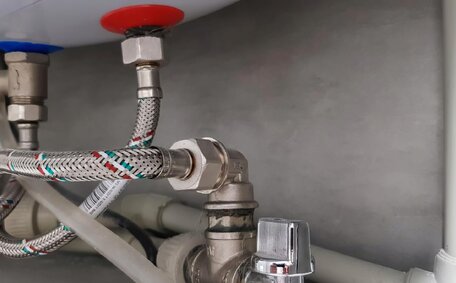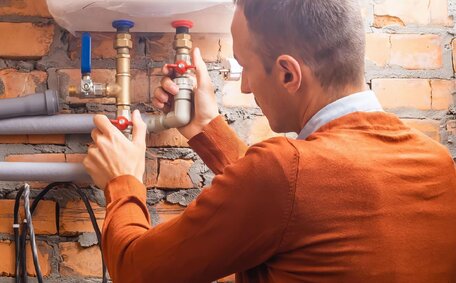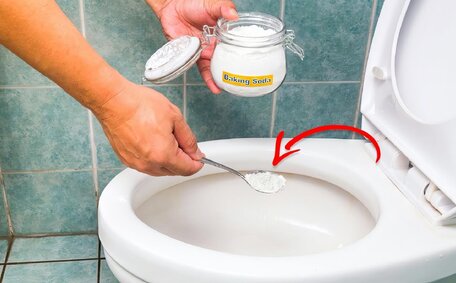Introduction to DIY gas fitting: Evaluating what you can and can’t do yourself
It’s essential to distinguish between DIY-appropriate plumbing tasks and those necessitating a professional plumber for safe gas fitting at home. At North Epping Plumbing, we recognise how essential innovation in plumbing can be to meet diverse needs, with over 10 years of experience managing all kinds of plumbing issues, from leaky taps to extensive gas line installations.
While it may seem convenient to engage in plumbing repair work, such as swapping out fittings, keep in mind, the cons of DIY plumbing present substantial risks if the work isn’t executed properly. Attempting gas fitting on your own? Exercise caution. Errors can lead to severe threats like gas leaks, explosions, carbon monoxide poisoning, and water damage, incurring significant repair costs and insurance claims.
What gas fitting tasks can I DIY legally and safely?
As a general rule, tasks like ensuring correct fittings on the gas supply lines to your home are best left to licensed professionals. Nonetheless, aspects of your renovation, such as plumbing work downstream from the gas meter, can be tackled with your DIY plumbing skills, including:
- You can accomplish various plumbing jobs around your house, such as embarking on pipe fitting projects to upgrade your home’s water systems, including hot water system replacements or cooktop installations
- Installing gas pipe fittings to code on your own when setting up new gas outlets around your house
- Replacing flexible connector hoses on appliances such as your washing machine
- Refurbishing fixtures like faucets in any room, or installing new bathroom accessories like a curtain rod, which also involves replacing valve washers and seals on taps
When should you call a professional gas fitter?
Conversely, more complex DIY plumbing tasks, such as installing new lines or rerouting pipes, should be managed by professional plumbers for safety and compliance. This includes:
- Experts should handle tasks such as extending or installing new gas lines
- Installation of a new gas hot water heater is a specialised task
- Creation of new gas outlets and running lines to them as part of broader building work for home improvement projects
- Ensuring proper ventilation for new gas appliances, including installations such as a new toilet or air conditioner
- Conducting comprehensive tests for working gas equipment to check for leaks after installations
Ignoring building codes or using inferior components could lead to dangerous gas leaks, highlighting why you need to employ professional plumbers. Our licensed plumber to do the job has the expertise, tools, and the inclination you need to ensure safety and legality in your project when carrying out gas projects.
For plumbing services compliant with local state standards that might save money in North Epping and advice on DIY projects best avoided, consider calling North Epping Plumbing. Absolutely, contact the team at North Epping Plumbing on 1300 349 338 today.
Safety procedures and gear for DIY gas fitting
Essential safety procedures for DIY gas fitting
In DIY plumbing, abiding by stringent safety protocols is crucial, especially with gas fittings. Gas leaks carry a high risk of explosion, poisoning, and property damage if mishandled. Here are some critical procedures to adopt:
- Always test for leaks using leak detection fluid after completing any electrical or plumbing work
- Switch off the gas supply and employ lockout tags while working
- Work in a well-ventilated area away from ignition sources
- Inspect appliance hoses and fittings for wear before reuse
- Employ only proper and compliant fittings, certified to stringent legal standards and sealed carefully for safety.
Personal protective equipment
Acquiring appropriate protective gear is essential to safeguard against potential hazards, such as:
- Gas detector ($150-$300)
- Chemical splash goggles ($15)
- Nitrile gloves ($10 for 10 pairs)
- Fire extinguisher ($100)
Our team at North Epping Plumbing provides expert advice on DIY plumbing, offering insights to ensure you have what you need for your projects, supported by our fully licensed expertise and comprehensive toolset. Contact us to discuss what you need for your specific project.
Tools and materials required for basic DIY gas fitting projects
Before undertaking DIY tasks like connecting gas appliances, consider the advantages of having the right tools and quality fittings at your disposal. Here’s an overview of some essential items you’ll need if you’re considering taking on DIY plumbing jobs:
Tools
- Pipe wrenches - for grasping and turning gas pipes ($15 - $50)
- Teflon tape - gas-rated, prevents leaks ($5)
- Pipe thread sealant - you can use this to seal pipe joints securely ($8)
- Adjustable wrench - tightens fittings ($15 - $20)
- Tube cutter - cuts copper pipes ($15 - $25)
- Leak detection fluid - finds gas leaks ($8)
Materials and fittings
- Copper pipes - durable water lines and gas supply lines ($25 for 15 ft.)
- Flare fittings - connect pipes ($3 each)
- Union joints, crucial for water and gas connections, and two 90-degree elbow fittings for linking pipe segments ($5)
- Female pipe thread brass valves - for shutoffs ($6+)
Choose materials such as stainless steel or certified copper pipes with pre-flared ends for home improvements to guarantee safety. Using unsuitable fittings can significantly increase the risk of hazardous leaks.
Our qualified technicians at North Epping Plumbing can provide valuable insights on which plumbing projects suit your budget and advise on the appropriate tools, materials, and fittings for the tasks you wish to tackle. Contact us for professional advice.
Step-by-step instructions for permissible DIY gas appliance installations
Replacing a cooktop burner nozzle
Replacing nozzles on gas cooktop burners is a task many homeowners can safely perform in their kitchen, provided certain precautions are observed:
- Turn off the gas supply to the cooker and unplug it from the wall.
- Lift off the trivets, burner caps and heads to access and attach your nozzles underneath.
- Utilize an adjustable wrench to unscrew and remove the old nozzle from the gas line.
- Wrap the threads carefully with gas-rated Teflon tape to prevent leaks.
- Screw in the replacement nozzle by hand at first, then use the wrench to tighten it.
- Run a soapy water solution along the connections to check for leaks before reattaching burners.
- After the installation, bring the gas back online, plug in the cooker, and thoroughly test its operation.
Connecting a gas pipe to a portable barbecue using an existing bayonet gas point is a common home improvement task. Make sure bayonets are compatible, and always check for leaks after connecting.
If any issues crop up during your DIY projects, it might be time to call expert plumbers from North Epping Plumbing on 1300 349 338.
When to call a professional plumber for complex or restricted gas fitting jobs
Devised by regulations, certain gas fitting tasks are solely reserved for licensed gas fitters and can’t be attempted as DIY projects. Engaging in illegal DIY plumbing without the proper qualifications risks hefty fines, safety issues, and invalidating your home insurance.
Projects requiring licensed professional assistance include:
- Installing or extending internal gas lines
- Working upstream from the gas metre
- Installing flued gas heaters or cooktops
- Adding new gas outlets or bayonet points
- Converting appliances from natural gas to LPG (or vice versa)
- Certifying installations comply with regulations
Gas fitters are highly skilled professionals who dedicate considerable time and money to training to acquire approved qualifications, allowing them to legally perform restricted jobs. At North Epping Plumbing, our fully licensed Plumbers can tackle the complex installations you may want to do with utmost safety.
Rather than risking DIY attempts on legally restricted tasks, put your mind at ease by reaching out to our team of professional plumbers on 1300 349 338 for reliable, affordable gas fitting services backed by 10+ years of plumbing experience.
Ongoing maintenance tips for DIY gas fitting projects
Frequent maintenance checks are vital to maintain the integrity of DIY-installed gas fittings. Here are some crucial maintenance practices to consider:
Conduct visual inspections
Do a monthly visual check of all gas pipes and fittings you’ve installed or connected for cracks, leaks or damage. Watch for signs like discolouration, bubbling paint, hissing sounds, or the smell of gas, which indicate potential leaks. Also check appliance hoses and valves.
Test connections for tightness
Once a year, make sure all nuts and fittings are securely tightened using an adjustable wrench to avoid leaks. Loose fittings can leak over time from vibrations or movement.
Replace old flexible hoses
Timely replacement of appliance flexible hoses before they degrade is a crucial aspect of plumbing maintenance, averting potential mishaps. Swapping out old hoses prevents dangerous ruptures.
Check appliance efficiency
If gas appliances seem to heat slower or the flames appear abnormal, there may be an underlying issue. This could indicate blocked jets or faulty control valves. Arrange professional servicing if problems persist.
Consider a trade inspection
For assurance and a thorough comprehension of the intricacies involved in plumbing works, it’s sensible to be aware of what routine checks entail; touch base with licensed plumbers to help fix your installations every two years to audit installations, as they may spot potential risks in compliance with regulations early on.
For professional assistance inspecting or servicing your full gas system, contact North Epping Plumbing on 1300 349 338 today.






